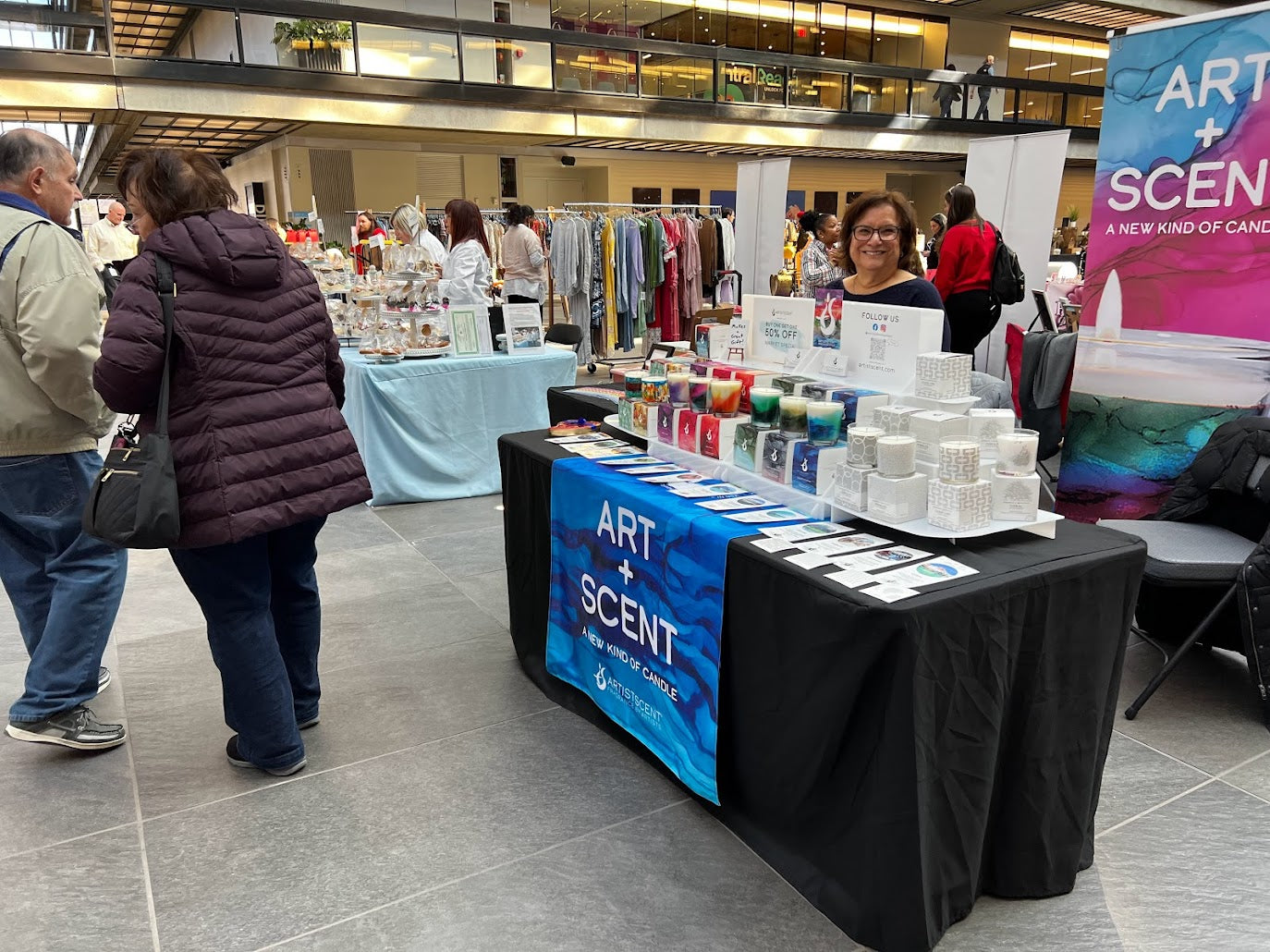THE ART OF FRAGRANCE DEVELOPMENT

You light your favorite candle and the fabulous scent fills the room, transporting you to a favorite place, evoking a treasured memory, or simply improving your mood. Have you ever wondered what went into creating that perfect scent? Let’s take a peek behind the curtain of the art of fragrance development.
Perfumers are olfactive artists.
Quality fragrances are complex mixtures of oils made from both natural and safe synthetic ingredients. There are literally thousands of individual aromatic ingredients that are used in the creation of fragrances. Perfumers are olfactive artists who create the fragrances that you and I love. Each perfumer must apprentice for a minimum of 5 years to learn the scent profiles of each material available to them and how to combine them into beautiful creations. From an extensive ingredient palette, they formulate custom blends that fit a customer's fragrance concept. Each has their own style and approach to formulation—a creative expression in a different medium. Perfumery is a very specialized career with only about 600 perfumers worldwide!

Every fragrance a perfumer creates is their masterpiece (no parent has an ugly child, after all 😊), so it's hard for them to be objective about their work. Scent perception is very subjective and interpreting each client's individual needs is critical to meeting their vision. To help bridge the gap between client and Perfumer, the fragrance industry has a role known as a Fragrance Evaluator. The evaluator works closely with the client to understand their specific wants and needs, translating that information into technical terms for the perfumer. Evaluators are the objective “nose” that bridges the perfumer and the end user to help craft a perfectly optimized scent.

In contrast to the traditional fragrance development process which would normally be based on a marketing concept or color, creating scents from a visual artist’s perspective can result in something unique and very different. When we created the Soul Flame candle with artist Elizabeth Karlson, a traditional approach might have been to create a scent that matches the colors in the painting—bright yellows and oranges. Those colors might suggest a bright citrus blend of orange, grapefruit, and lemon. But Lizzi's inspiration was different. For her, this painting represented her memory of sitting around a campfire with loved ones, sipping hot apple cider infused with cranberries and cinnamon. This inspiration was perfect direction for the perfumer, and the resulting fragrance is not only fantastic on its own, but truly authentic to the artwork.
The resulting fragrance is not only fantastic on its own, but truly authentic to the artwork.
Similarly, the greens and reds of Ronnie Queenan's Along the Path would have traditionally suggested a floral bouquet scent of red roses along a garden path. But for Ronnie, it was about walking through the bayou, taking in the thick and mossy air mixed with some light florals.

Working with visual artists and connecting their work to scent truly brings their work to a new level. As one of our vendor partners once said, creating scents as the artist described brings one closer to the "soul of the art".







Comments